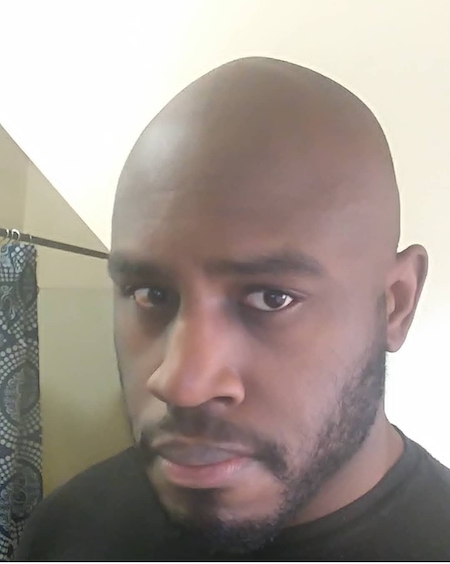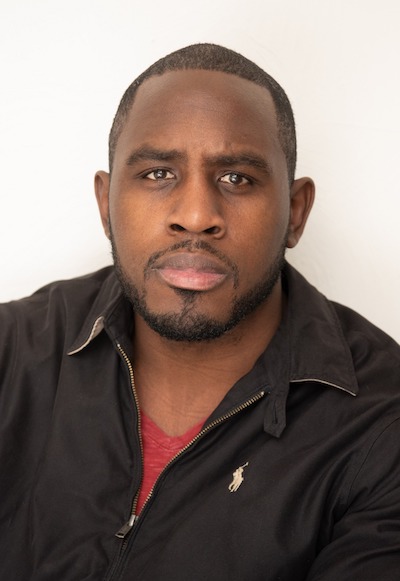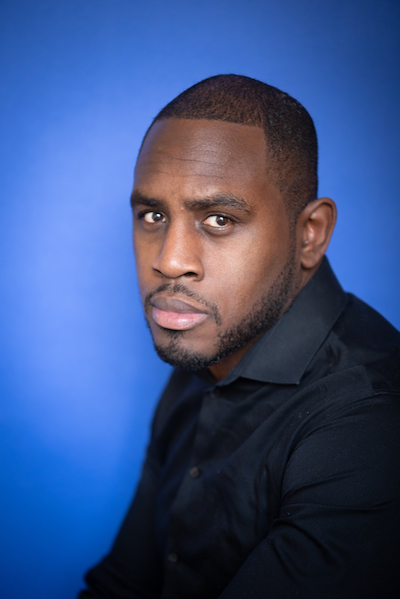Low-level laser (light) therapy (LLLT) is a medical technology that has been used to treat a variety of conditions by stimulating healing, relief of pain and inflammation, and restoration of function. LLLT, also called photobiomodulation or cold laser, is a type of phototherapy that utilizes wavelengths of light in the visible to the nearly infrared range of 670–950 nanometers (nm).
They are referred to as “low-level” or “low power” because they operate with a low wattage (W) level. Typically, these lasers are usually between 5 and 500 mW
This answers the question of *what* a low-level laser is, but it doesn’t tell us anything about *how* a low-level laser works. To answer this question specifically, we have to start with some cool science, define some basic terms, and take a trip back a few decades.
What is a laser?
The word “laser” is an acronym for “Light Amplification by Stimulated Emission of Radiation”. A laser is any device that is capable of emitting light via a process known as “optical stimulation” based on the stimulated emission of radiation in the form of photons.
A laser generates a beam of intense light. We aren’t concerned about the mechanisms of laser beam generation as they aren’t necessary to understand LLLT and how it compares to a standard laser. We must, however, understand a few basic characteristics of all laser beams compared to a conventional light source.
The major difference between laser light and light generated by white light sources (your normal experience with light, like the light generated by a light bulb) is that laser light is monochromatic, directional, and coherent. White light is polychromatic, has high levels of divergence, and is incoherent.
Further explanation of the terms and their significance follows.
The 3 qualities that make a laser different from conventional light sources
Monochromatic
All of the light produced by the laser is of a single wavelength. Or, put another way, all of the light produced by a laser is the same color. This is different from the white light that comes from natural (the sun or fire) or artificial (light bulb) sources.
White light is a combination of all visible wavelengths (400 - 700 nm). The rainbow produced by a prism is white light broken into all the colors (wavelengths) that make it make up. In fact, when you see a rainbow, it’s a result of the rain droplets in the air acting as a prism.

Directional
Normally, light propagates from its source in a divergent wave pattern. This causes light to lose its intensity over a relatively short distance. In exchange for that trade-off, the photos of the light illuminate a wide area, enabling you to use them to see.
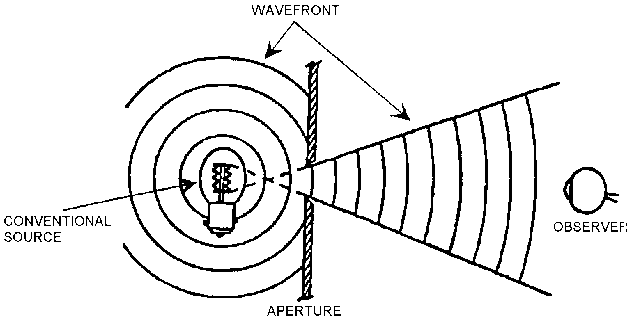
In contrast, laser output has very little divergence and can maintain beam intensities over long ranges. As a result, relatively low power lasers are able to project more energy at a single wavelength within a narrow beam than can be obtained from more powerful conventional light sources.
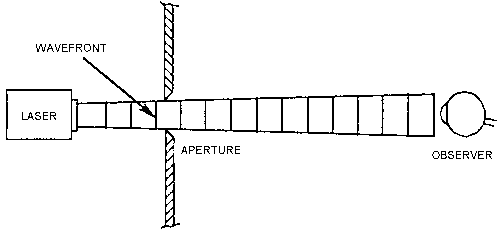
Coherent
Coherent light is light whose photons oscillate at the same frequency and whose wavelengths are in phase. Incoherent light is the opposite of this. The photons of incoherent light oscillate at different frequencies and their wavelengths are not in phase with each other.
This enables more energy to be generated from the same light source because the photons all arrive at the same time.
When you combine these three factors of laser light, it’s easy to under why they’re so unique, useful, and powerful.
To put all of this in perspective, consider that the watt (W) is the fundamental unit of optical power. It’s defined as the rate of the energy of one joule (J) per second. Your average household incandescent light bulb uses about 60 watts of electricity and LED light bulbs use about 10 watts.
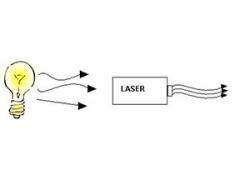
Unless you touch their surface, you’ve never been burned or cut with the light from a lightbulb. However, because of a laser’s unique characteristics, that same wattage can carve acrylic or aluminnum.
Now that we have a solid understanding of what makes laser light special, we can now fully appreciate low-level therapy and how that differences from conventional laser technology.
What is Low-Level Light Therapy?
After the creation of lasers in the 1960s, it was accidentally discovered that laser light at low energy levels had the potential to improve wound healing and reduce pain, inflammation, and swelling. This feature of lasers was discovered by accident by Endre Mester at Semmelweis University, Budapest, Hungary in 1967.
Mester conducted an experiment to test if laser radiation caused cancer in mice. He shaved the hair off their backs and divided them into two groups. One of those groups was irradiated with a low-powered ruby laser.
The treatment group did not get cancer and to his surprise, the hair grew back more quickly than it did in the untreated group. He called this “Laser Biostimulation”. Mester soon applied his findings to human patients, using lasers to treat patients with nonhealing skin ulcers
We’ve already established that commercial laser applications are typically in the range of 25-80 W. Low level laser therapy is a laser application that ranges between 1mW – 500mW.
Since 1967 over 100 phase III, randomized, double-blind, placebo-controlled, clinical trials have been published and supported by over 1,000 laboratory studies on how it works and many of its effects.
How does low-level light therapy work?
The precise biochemical mechanism underlying the therapeutic effects of LLLT is not completely understood. We know for sure that LLLT acts by inducing a photochemical reaction in the cell, a process referred to as biostimulation or photobiomodulation.
It’s believed that this chemical reaction acts on the mitochondria to increase adenosine triphosphate (ATP) production, modulation of reactive oxygen species (ROS), and the induction of transcription factors.
- ATP production increases when an injury is sustained. This is to facilitate healing as it plays a significant role in would repair (source).
- Reactive oxygen species cause damage to the basic building blocks of the cell, including lipids, proteins, DNA, and RNA (source).
- The induction of transcription factors leads to the regulation of gene expression that may have previously been modulated or repressed.
These three factors combined lead to a dramatic increase in cellular healing and repair. Low-level light therapy works to induce these cellular changes and thus causes a marked healing response.
How does low-level light therapy work to slow or reverse hair loss?
To fully appreciate how low-level light therapy works for hair loss, we have to understand the four stages of hair growth.
- Anagen phase: This is the growing phase of hair. During the anagen phase, your hair follicles push out hairs that will continue to grow until they’re cut or until they reach the end of their lifespan and fall out. It’s key to remember that hair starts beneath the skin and has been growing long before they are visible.
- Catagen phase: This is the phase where the anagen phase ends. Hair follicles shrink and hair growth slows. Also, during this phase, hair separates from the bottom of the follicle but has not separated or started “shedding”.
- Telogen phase: Hairs don’t grow during the telogen phase, but they don’t usually fall out either. The telogen phase is also when new hairs start to form in follicles that have just released hairs during the catagen phase.
- Exogen phase: Technically, many consider the exogen phase an extension of the telogen phase. This is the phase that hair typically sheds, as the new growth pushes out the hairs that were separated during the catagen phase. The exogen phase is often considered an extension of the telogen stage. During the exogen phase, it’s normal to lose 50-100 hairs per day.
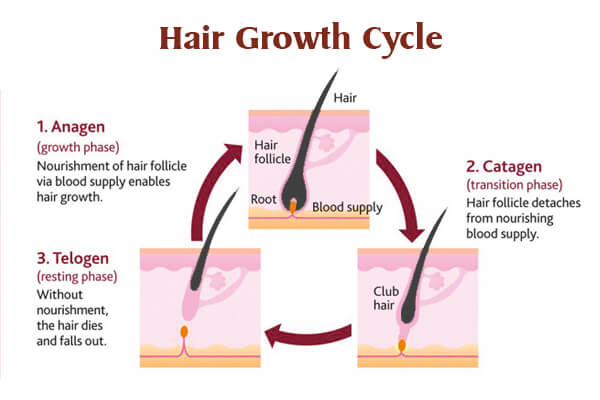
Male androgentic alopecia(MAA), male pattern baldness, or “going bald” happens when the anagen phase decreases while the telogen phase remains the same length or gets longer. Ultimately, anagen duration becomes so short that the growing hair fails to achieve sufficient length to reach the surface of the skin, leaving an empty follicular pore.
All of this is thought to be caused by the DHT, a useful hormone with the unfortunate side effect of causing the hair follicles to shrink, which simultaneously extends the amount of time hair spends in the telogen and exogen phase and reduces the growth that occurs in the anagen phase.
Analogously, think of this like trying to fill a bucket with a tiny hole in the side that is growing.
A free dermaroller to help you regrow hair
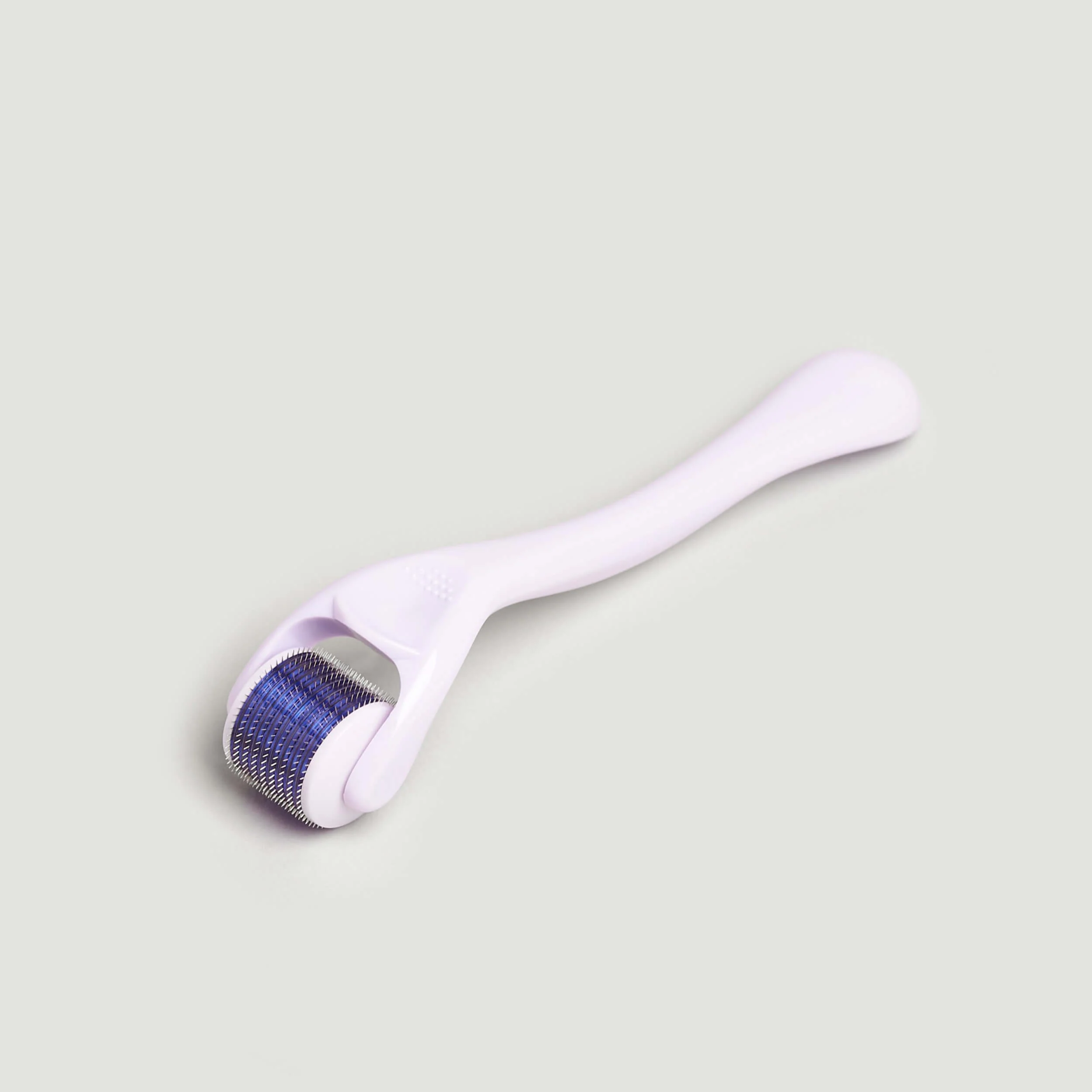
Here’s a limited-time offer from Hairguard. They will ship you a free derma roller. All you have to pay for is shipping.
The science and success stories are all over the internet. Now you can try the dermaroller that’s been designed with the exact specifications as the one used in the studies that have been shown to regrow your hair.
And for free.
Get your free dermarollerMale androgenetic alopecia and the bucket analogy
Male androgenetic alopecia simultaneously causes the rate of the water coming into the bucket to slow while increasing the size of the hole in the side of the bucket.
Eventually, not only will the water rate slow to barely a trickle, but the hole in the side of the bucket will be so big that any water still running in won’t be able to go above a certain level.
Then enters low-level laser therapy. Think of low level laser therapy as both a construction worker patching up the hole in the wall and the plumber unclogging hose that is supplying water to the bucket.
Low level light therapy is assumed to shorten the telogen phase so that hair follicles enter the anagen phase more quickly. It’s also assumed to prolong duration of anagen phase by increasing rates of proliferation in active anagen hair follicles and to prevent premature passage into the catagen phase [source].
From a mechanistic standpoint, this effectively reverses male pattern baldness. Of course, if the hair follicle is already minaturized to the point of no return, then LLLT won’t be effective. The plumber can only unclog the drain to be effective if the water hasn’t been shut off.
Weiss and coworkers, by using RT-PCR and microarray analysis, demonstrated that depending on the treatment parameters. LLLT has also been shown to effect the biochemical causes of hair loss.
Low level light therapy has also been shown to:
- Modulate 5-α reductase expression, which converts testosterone into DHT. This means that the main hormonal agent loses its effectiveness in the scalp.
- Alters vascular endothelial growth factor (VEGf) gene expression to promote angiogensis (new blood vein formation) which have significant roles in hair follicle growth hair growth on human dermal papillae cells [44–47].
- LLLT has been demonstrated to modulate inflammatory processes and immunological responses, which may also have an effect in hair regrowth [32,48].
- Considering that inflammatory has been shown to play a role in the androgenic alopecia, modulatory effects of LLLT on inflammation might have a significant role in causing hair regrowth [19].
Does low level level light therapy cause shedding?
LLLT does not cause shedding. Considering everything we’ve discussed about how the hair cycle works and LLLT’s effect on it, we can easily see why LLLT doesn’t cause shedding
LLLT works by shortening the telogen phase and prolonging the anagen phase. This automatically means that fewer hairs are even capable of shedding because they spend less time in the telogen phase, the phase where shedding occurs.
People believe that LLLT causes shedding because when you start the treatment, dead hairs (hairs no longer attached to the blood source of the follicle) are cast away quickly, but only because the anagen phase is extended and more hair is new hair as growing.
You may initially notice more hair falling out when you first begin low-level laser hair therapy. However, these hairs were in the telogen resting phase and were going to fall out *anyway*.
Not only does low-level light therapy not cause shedding, causes the exact opposite outcome. You experience less shedding because the shedding phase (telogen) is shortened and the growth phase (anagen) is lengthened.
What type of results to expect
Low-level light therapy produces excellent results for thinning hair resulting from weakened, thinner hair follicles. As with all hair loss treatments, the earlier you start to apply the treatment, the better the result you can expect.
LLLT does not work in advanced cases of baldness. It cannot cause hair growth on areas of the scalp where there’s no hair at all, as there are no hair follicles to stimulate. LLLT only works on active hair follicles and has no effect on hair follicles that are already shrunken and dead.
- Research has shown that LLLT helped to slow down or even stop hair loss in 85% of patients undergoing treatment. A 2013 study of 41 males ages 18 to 48 found that laser hair treatment provided a 39 percent increase in hair growth over a period of 16 weeks.
- A metanalysis of LLLT showed that both men and women experienced substantial growth in temporal hair loss (55% in women, 74% in men) and vertex (65% in women, 120% in men).
- The same metanalysis references a study demonstrating significant improvements in overall hair regrowth, slowing of hair loss, thicker feeling hair, better scalp health, and hair shine was also demonstrated in terms of patients’ subjective assessment at 26 weeks over baseline.
How often should you use Low-Level Light Therapy to grow your hair back?
Ideally, every day. As with any non-surgical hair loss treatment, consistency matters more than anything else.
This is why it’s so important to have your own device. When this application of the technology was in its infancy, daily treatments weren’t possible for the average man because LLLT devices were large, cumbersome, and only at spas. Now, an LLLT hat is relatively inexpensive.
Also important is the length of time it’s used each day. The device I own, the Revitalizer 272, has two timing options: 8 minutes a day every day or 30 minutes every other day.
No matter what, this is like any other hair treatment: the best results come from consistency. It doesn’t matter whether it’s natural treatments, Minoxidil, Oral Finasteride, topical finasteride, or using a DHT-blocking shampoo.
If you aren’t consistent, you won’t get any results.
How long will it take for my hair to grow back using low-level light therapy?
Every person is different, but the research has shown fairly consistent results, with most people being able to observe changes in hair density, volume, and strength within 6-12 months.
Of course, this doesn’t mean that nothing is happening during the first 6 months. Just remember that lllt therapy effectively recharges and rebuilds your hair growth cycle by reducing the time hairs spend in the telogen phase. This takes time, assuming consistent use.
Your hair will not only have to discard the old hair but start to recharge new hair. Change happens from the very first use, but nothing occurs
Is Low-Level Light Therapy safe?
In over 50 years of use, LLLT has a low incidence of adverse effects.
In the specific use of LLLT for hair growth, the only issue was the onset of telogen effluvium but the onset of it only lasted for 1-2 months.
Telogen effluvium is a form of temporary hair loss that usually happens after stress, a shock, or a traumatic event. It usually occurs on the top of the scalp. Telogen effluvium is different from the hair loss disorder called alopecia areata.
The conclusion
Low-level light therapy is a safe, affordable, non-invasive treatment for hair loss. Its mechanisms guarantee that it will stop your hair loss cold and thicken whatever hair remains. Of all the hair treatments out there, the chances of regrowth are only higher if you do an FUE transplant (read about my experience getting two FUE transplants here—>My experience getting an FUE hair transplant).
If you want to regrow your hair and it’s not too far gone, a low-level laser cap is the way to go. I personally recommend the model that I have, the FDA-approved Bosley Revitalizer 272.
The rest is up to you.


